Despite regional challenges and skepticism, serial gigafactory founder Lars Carlstrom sees untapped potential and strategic advantages in the UAE and Middle East, and worries that Europe is missing a huge opportunity to reindustrialise. With Lucid’s foray into EV production in Saudi Arabia and Ceer’s imminent market entry, is the Middle East primed to embrace electrification?

Regionally, the United Arab Emirates (UAE) is not the first place that comes to mind when you hear the term, “electrification.” But just last month, Lars Carlstrom, who is seeking to kickstart battery production on a mass scale, announced that his gigafactory company, Statevolt, would be embarking on the construction of a pioneering battery plant in Ras Al Khaimah, UAE, called Statevolt Emirates, to the tune of $3.2 billion in capital expenditure.
The Statevolt setup, which rests on modularity, seeks to enable “swift market entry and production diversification based on technology readiness.” Statevolt Emirates will initially be focused on the production of semi-solid state battery cells and eventually transition to full solid-state at full capacity.
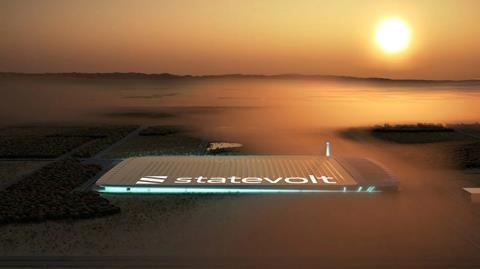
The idea itself may just be a solid one. The region, though, has raised some questions for those concerned with the grand electrification project, but Carlstrom is adamant that many have missed the mark with hopes hinged on Europe and the US. He believes that all is not as it seems for the West’s electrification strategy. And regional challenges are undeniable. Carlstrom’s Britishvolt and Italvolt setups were unable to take root due to reported beauracratic hurdles, investment delays and grid connection challenges. He has also pointed to a lack of state support and investment.
With so many gigafactories in the US and Europe both on the ground and in the pipelines, why would Carlstrom set his sights on the UAE? Because, according to Carlstrom, the organic demand necessary to drive the change in the occident, simply doesn’t exist.
”China would say that there’s no chance that the European automotive industry will last” - Lars Carlstrom, Statevolt
There are growing indications of this demand deficiency. In the US, both Ford and GM have scaled back plans to produce EVs at earlier predictions, and further indications of dampening demand can be seen in Europe.
Is the market inadequate to support the EV transition?
The balance of market forces and social need is the crux of the matter here. In other words, that which is in the public interest may not always be in the interest of the public. Carlstrom says: “Europe is leaving it to the market to support the EV transition, but such a massive transition will never happen if the reliance is solely on the market itself.
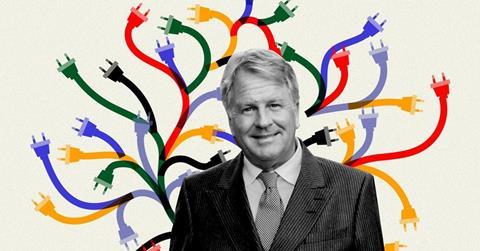
”What is needed is a great deal of support from government authorities, which in Europe, simply isn’t there,” he tells AMS. And with inter-regional competition and the looming threat of automotive production prowess coming from China, the local electrification situation may have an exposed electric Achilles’ heel.
Carlstrom says: “China would say that there’s no chance that the European automotive industry will last, and European automakers will eventually have to move their business to China just to simply survive. And that’s what I believe is going to happen.”
“Most of these projects in Europe will fail due to the sheer magnitude of the endeavour” - Lars Carlstrom, Statevolt
Then there are other macroeconomic considerations. The Statevolt CEO predicts that “millions of jobs are going to be lost in Europe alone.” Although this sounds unthinkable, it aligns with the World Economic Forum’s forecast from last year, predicting a loss of 14 million jobs on a global scale. “We are in a very difficult situation,” says Carlstrom, “and I am seriously concerned that we’re entering into a recession that is going to last for a really long time.”
Such a situation would also have acute consequences for the automotive industry’s electrification project on a global scale.
Realistic milestones for electrification success
CarIstrom believes that in order for the EV transition to be successful, the industry, as well as the public bodies looking to catalyse the change, should put up less ambitious milestones. “We need to extend internal combustion engines until at least 2045,” he says. “Meanwhile, we should be aiming for 50% EVs and 50% ICEs on the road by 2035. Otherwise, transition goals are going to be met with failure.”
If goalposts are constantly pushed back, which already seems to be the case, then public morale will also be impacted, and the little organic demand that does exist for the transition will be stifled even further.
CarIstrom thinks that for Europe, the transition could be achieved in a speedy manner, but that such a situation requires investment in the multiple billions. “There will be a massive amount of money that needs to be funnelled into something akin to the Inflation Reduction Act (IRA) in the US for example.
”When it comes to electrification in the middle east, there are so far, only two projects that presently tend to garner any attention at all: Lucid and Ceer”
“But we don’t have anything close to it. This green deal [from the European Commission] looks good on the face of it, but financially, to achieve the transition with this level of investment is almost impossible. Even large corporations are unable to extract the finance required. It’s too complicated and too bureaucratic, so it’s a complete disaster.”

Daniel Harrison, Automotive Analyst at AMS provides a counterweight to the idea of public funding as the prime mover for enabling electrification. Harrison says: “Whilst it is true that government support for investment in gigafactories is a major factor in their location and viability, it’s not the whole picture.
“For example, the US inflation reduction act (IRA) is undoubtedly swaying some companies to invest more in the US than Europe where state aid rules can prevent government subsidies. Nonetheless, despite this, within Europe, over 50 gigafactories are either established or in the pipeline, and this has largely been achieved by private finance, notwithstanding the 2024 downturn in EV sales.”
But Carlstrom says that on the fiance front, the setback we now see with EVs is also disastrous for the market at large, as he believes there will not be any private equity to support the shift.
“Most of these projects in Europe will fail due to the sheer magnitude of the endeavour. And I believe that this failure is going to leave the field open for China to exploit.”
Regional variations: Does the Middle East have what it takes to electrify?
But why would the Emirates seem like a viable option, and what is the EV footprint actually like in the region? When it comes to electrification in the Middle East, there are so far only two projects that currently tend to garner any attention: Lucid and Ceer.
“The UAE and Middle East currently has relatively low levels of vehicle production, and very low levels of EV production” - Daniel Harrison, AMS
Lucid is a venture backed by Saudi’s Public Investment Fund, and opened its first international EV manufacturing plant in Jeddah in 2023 under a $3.4 billion deal with the Kingdom. The facility has now commenced production of the Lucid Air electric sedan, but has an initial annual capacity of only 5,000 units, set to expand to 155,000 vehicles per year.
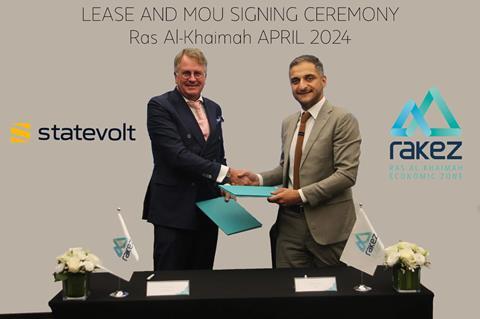
Ceer is a joint venture between Saudi Arabia’s Public Investment Fund (PIF) and Foxconn, and reached a significant milestone in March 2024, securing a $1.3 billion contract for the construction of its EV manufacturing complex in King Abdullah Economic City. The finished plant will span over 1m sq. m, and is currently under construction. Ceer’s inaugural electric vehicle lineup includes sedans and SUVs tailored for the Saudi/MENA markets, but is still slated for release in 2025 upon the completion of the plant.
So while Lucid Group has already begun EV production in Saudi Arabia, Ceer’s manufacturing operations are pending commencement, with vehicle production anticipated to begin next year following factory completion.
”However, there are a multitude of other factors which are at play when choosing to locate a gigafactory – it needs to be localised to automotive production, and broader supply chain clusters; there need to be good logistics infrastructure; low-cost renewable energy; low land costs; business rates; and also specialised skilled labour is required – which is often overlooked as a factor.”
- Daniel Harrison, AMS
So some would say that objectively, the region lacks any deep history or infrastructure of electrification.
Harrison adds: “For Statevolt, the UAE’s government support for Statevolt Emirates gigafactory is welcome, but notably the initial plan appears to be to supply solid-state batteries for energy storage solutions to Africa and the wider region. The UAE and Middle East currently has relatively low levels of vehicle production, and very low levels of EV production, apart from the Lucid plant in Saudi Arabia, plus Ceer and SNAM. Therefore for now it’s unclear how significant Statevolt’s gigafactory will become for EV production in the region.”
Bur CarIstrom sees a major opportunity thanks to the fact that there is a high level of funding available in the Middle East, which he believes will enable the region to take the lead in ”a new era of industrialisation.” He says that another enabling factor is that the region has a much lower bureaucracy threshold, with building permits taking a matter of weeks instead of years, which he believes will be another key enabler in achieving the transition.
“All of these considerations; the lack of market demand in Europe and the US; the lack of sufficient regional funding and support; the looming economic crises; China’s role in the EV shift; massive funding opportunities in the middle east along with ample bureaucratic provisions - mean that as a region, the middle east has both the investment, and the implementation power to bring about that which Europe and the US lacks.”
But questioning voices remain, pointing to geography as critically bound up with infrastructure – or lack thereof.
Harrison rejoins: “However, there are a multitude of other factors which are at play when choosing to locate a gigafactory – it needs to be localised to automotive production, and broader supply chain clusters; there need to be good logistics infrastructure; low-cost renewable energy; low land costs; business rates; and also specialised skilled labour is required – which is often overlooked as a factor.”
Conclusions and beginnings: Regional states and Statevolt’s potential for electrification success
In considering the potential success of Statevolt’s entry into the UAE for its electrification project, several key factors come into play.
Firstly, the choice of the UAE, while unconventional, does seem to present unique opportunities. With the establishment of Lucid’s EV manufacturing plant in Saudi Arabia and Ceer’s imminent entry into the market, the region is already showing signs of embracing electric vehicle production. This suggests a growing interest and potential demand for such technology in the Middle East. The question is one of rate and return.
Additionally, the UAE’s favourable business environment, characterised by efficient bureaucracy and ample funding, may in the end provide for a promising backdrop for Statevolt’s endeavours. The high level of available funding and streamlined permitting processes could offer significant advantages for rapid project implementation, potentially positioning the region as an unexpected leader in the global shift towards electrification, but as Harrison points out, wider infrastructure will be key. So significant challenges remain. Among them are the need to establish robust automotive production and supply chain clusters, the need for greater investment in logistics infrastructure, and the cultivation of specialised skilled labour - the central human aspect of the shift. Addressing these challenges will be crucial for Statevolt as well as other players in the region in realising their electrification ambitions fully.
Despite these obstacles, the Middle East’s potential to emerge as a significant player in the electric vehicle industry cannot be entirely overlooked. With the right strategies in place and continued investment, the region just may well become a hub for innovation and production in the electrification space, challenging traditional automotive powerhouses and possibly reconfiguring the global electrification map in a way that hasn’t been given its due credence until now.































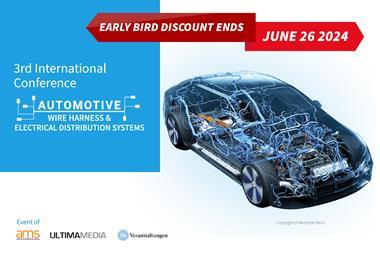
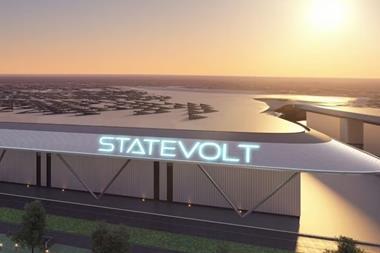





No comments yet